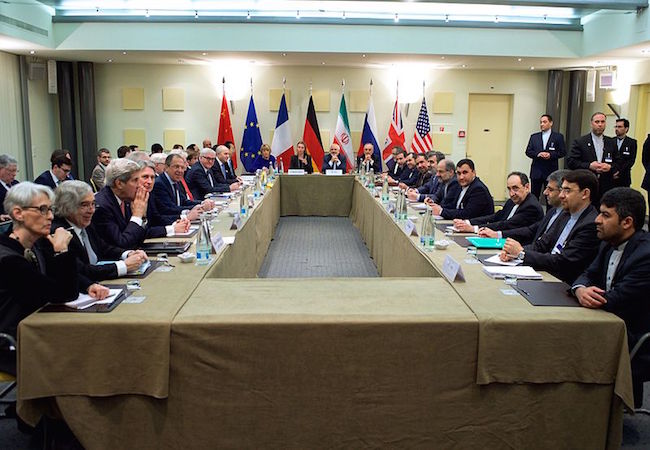Dimensions of Iranian nuclear deal

By Adeel Mukhtar Mirza
A nuclear deal was established between Iran and the United States, Russia, Germany, China, France and Germany on July 14, 2015, endeavoring at restraining Iran from acquiring nuclear weapons. The deal aims at diminishing uranium-enrichment capacity and enhancing monitoring measures that would gradually wedge Iran’s ability to get hold of or producing nuclear weapons. Interestingly, Iran has also concurred to revise its Arak research reactor wherein the plutonium separation activity was the main source of Iranian ambitions for a bomb. However, neither the text of the deal is simple nor the concerns of different stakeholders are without diversification as the deal has an assortment of dimensions.
Nuclear Non-Proliferation: The dawn of nuclear weapons has not only caused a budge in the strategic thinking but also made mankind toiled for it. The charm of nuclear weapons and destructiveness associated to it is one of the reasons why nuclear non-proliferation is referred as the foremost threat facing the world at the moment. In this scenario, Iranian non-compliance to non-proliferation compulsions agreed by signing Non-Proliferation Treaty (NPT) has been a topic of hot debates in the international strategic community. Fortunately, the Joint Comprehensive Plan for Action (JCPOA) would help in building confidence in non-proliferation efforts with the passage of time and successfulness of the deal.
Concerns of GCC states: Members of Gulf Cooperation Council (GCC) like Saudi Arabia, Kuwait, Bahrain, Qatar, Egypt, UAE, Jordan and Oman were of the concerns that the nuclear Iran would disturb the power of balance in the region and owing to Shiite-Sunni rift may lead to nuclear arms race in the region because of their different ideologies and interests. According to them, nuclear Iran would enable Iran to blackmail aggressively and hence would destabilize the region. Moreover, Iran has a $420 billion economy, which is yet saddled with sanctions and of course, removal of sanctions would boom Iran’s economy in a little time. Iran also has the world’s fourth largest crude oil reserves, so, Saudis fears that they could lose their market share after the removal of sanction and such situation is likely to intense region’s proxy wars. This is because of the fact that a resurgent Iranian economy would increase Iran’s ability to fund Iraqi Shia militias.
Concerns of Israel: Israel is of the view that dangerous concessions have been rewarded to Iran in the shape of nuclear deal as critical infrastructure will not be dismantled, the possible military dimensions of Iranian program were not resolved and research and development will likely to continue that leaves little grounds to believe that the deal would be an effective measure to stop Iran from bagging a nuclear weapon in the near future.
Imperatives for Pakistan: Pakistan is currently facing an acute energy crisis. The 7.5$ billion Iran-Pakistan (IP) was inaugurated with great trumpet blast in March 2013 with hope to overcome its energy insecurity with the passage of time. However, international sanction on Tehran made it impossible for Pakistan to get hold on required finances to build its part of IP pipeline. Now, fortunately, as the sanctions are likely to be lifted, Pakistan could start work on this project soon. As the Pakistan’s Petroleum Minister, Shahid Khaqan Abbassi said in an interview that the advancement on the IP project was blocked because of international sanctions on Iran. He further argued that “now hopefully, as the sanctions are removed, it facilitates us to address our energy needs and also meet the contractual obligations.”
As a whole, Iranian deal have diverse effects on the regional as well as global politics. Some would regard the deal as tricky and ambiguous one, while other would pronounce it as a political miracle. The case is very simple, in the long run, the Iranian deal would likely to serve as the kick start to regional integration.




